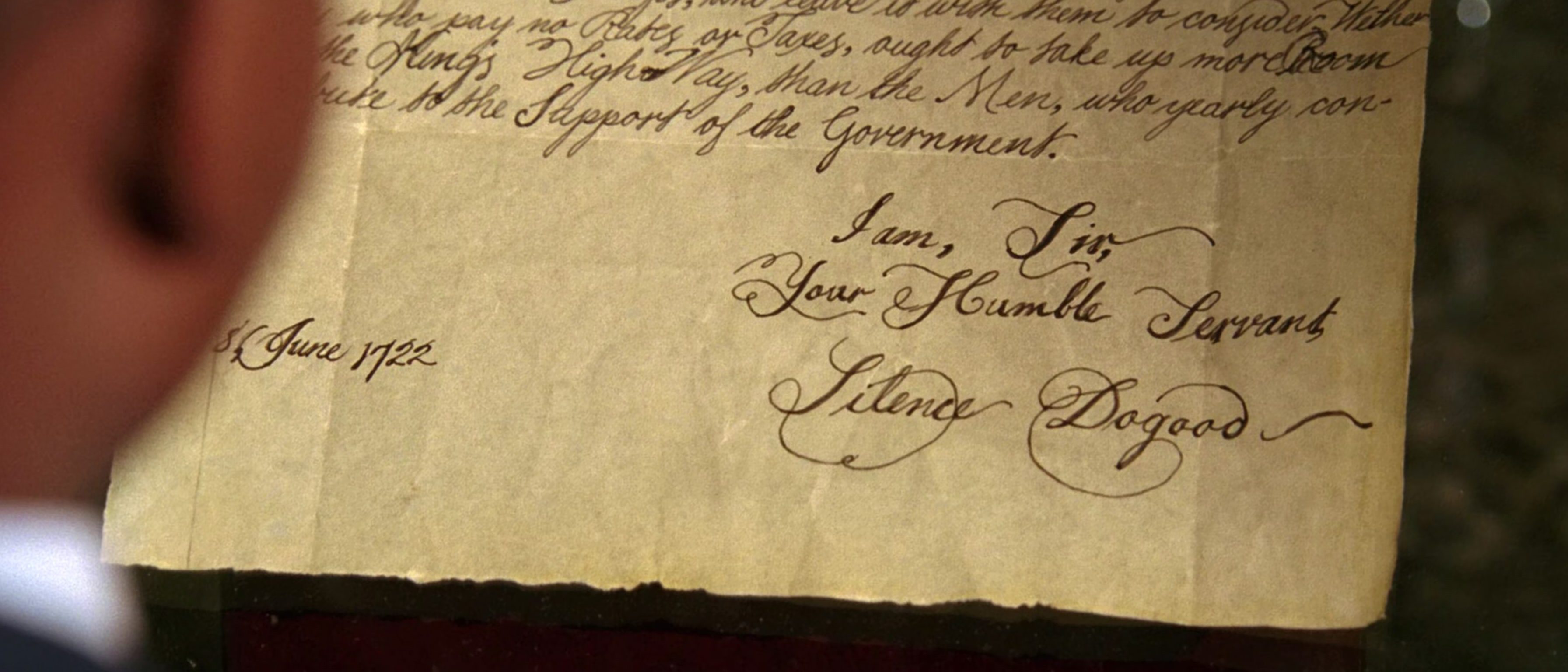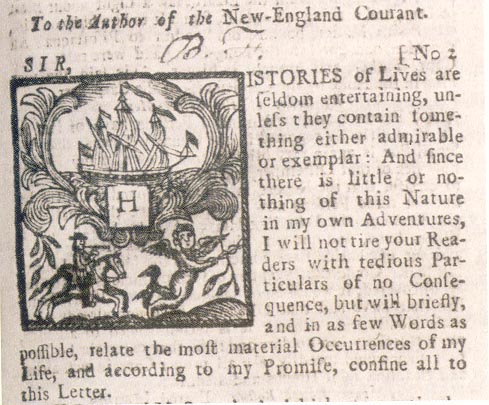In the 2004 action-adventure film ‘National Treasure,’ Benjamin Franklin Gates’ efforts to find a humongous Templar/Freemason treasure lead him to the Silence Dogood letters written by Benjamin Franklin using the persona of a middle-aged widow. The letters, which were previously in the possession of the protagonist’s father, Patrick Henry Gates, ended up in The Franklin Institute in Philadelphia, Pennsylvania, as a donation. As far as the real Franklin is concerned, the alter ego of Silence Dogood is a significant and popular part of his life. However, “her” letters cannot be found on display at the aforementioned science museum in the city where the inventor died!
The Original Manuscripts of the Silence Dogood Letters Do Not Exist
In ‘National Treasure,’ the original manuscripts of the Silence Dogood letters were well-preserved by Patrick Henry Gates before he donated them to The Franklin Institute. Upon the donation, the letters are prominently displayed with utmost reverence for the museum visitors. However, in reality, the original manuscripts of the letters do not exist anymore. The documents were not saved or preserved The New-England Courant, the newspaper which published them. The letters we see in the action-adventure movie are reproductions of the published versions of the writings Benjamin Franklin sent to The New-England Courant. In real life, the National Archives have electronic copies of the letters extracted from the newspaper.

The known existence of the Silence Dogood letters is seemingly limited to newspaper or electronic copies. Jim Kouf and the screenwriting duo of Cormac and Marianne Wibberley must have included the fictionalized versions of the Silence Dogood letters in the narrative as a nod to Franklin, the inspiration behind the protagonist’s name. Since the fictional Ben has an unignorable connection with this Founding Father and the real Franklin was a well-regarded Freemason, the screenwriters might have found it necessary to add references concerning the scientist to the film, which justifies the inclusion of the letters in the narrative.
The Disappearance of the Silence Dogood Letters
Considering the circumstances under which Benjamin Franklin wrote and published the letters through The New-England Courant, it is not a surprise that the original manuscripts do not exist anymore. The origin of the Silence Dogood persona and the letters can be traced back to Franklin’s brother, James Franklin, who decided that he wouldn’t publish his sibling’s writing in his newspaper. At the time, Franklin was a young apprentice of James, who rejected his brother’s works several times. Even though the letters were critical of Great Britain’s colonization of America, aligning with the foundations of the newspaper, James didn’t approve of his brother’s creations.

When James eventually learned that Silence Dogood was none other than Franklin, the truth angered the former, which explains why the publisher never cared to preserve the original manuscripts. Furthermore, at the time of writing, Franklin was not a Founding Father of immense significance but just a printing apprentice. Since it was impossible for James to predict the significance of the letters in the future, it is understandable why he seemingly dismissed the manuscripts after learning the truth behind them. At the time, the same letters were the least of James’ concerns. British authorities tried to suppress the newspaper because of the “treacherous” articles it published against the colonial rule.
At one point, James was even imprisoned because of the articles published in the Courant. Its publication ceased in 1726 when Franklin was in his early 20s. While he was fighting several legal battles on behalf of the newspaper, James might have viewed the Silence Dogood letters as insignificant work that was nothing more than a child’s play of his brother.
Read More: Is Diane Kruger’s Abigail Chase in National Treasure: Edge of History?


You must be logged in to post a comment.